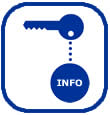 Strategies for Teaching Vocabulary
Strategies for Teaching Vocabulary
When building background information, we attach labels to concepts. Vocabulary is just another way to label a concept. Therefore, these two strategies—building background information and using vocabulary—fit together very well.
When teaching vocabulary, it must be an active strategy so your students stay engaged and focused. Giving them a list of vocabulary words to define is too passive since it does not require them to think about the terms. Students are basically copying rather than assimilating information.
Instead, use one of the active strategies listed below, depending upon the comfort, interest and skill level of your students:
Mind maps and concept maps display relationships between and among words used in text. For example, if your class is studying rocks and minerals, the words "rocks and minerals" would be in the middle of the map and the different types of rocks and minerals would be offshoots of that main concept. Those offshoots will then have definitions and other labels that help define what "rocks and minerals" are. This builds vocabulary and background information.
Word sorts require students to group words into categories and is another way for students to make connections between vocabulary and content. Depending upon the type of reasoning skill you are trying to reinforce, you will use either a closed sort or an open sort. In a closed sort, you determine ahead of time the categories students will sort words into. In an open sort, students do not have categories but must determine the relationships between the words.
Structural analysis of vocabulary examines root words, prefixes and suffixes and their meanings. Students apply this strategy independently since they can break a word down into its component parts and comprehend that those parts have specific meanings.
Scavenger hunts allow students to work in teams while discovering vocabulary and content. Using this strategy, give your students a list of vocabulary words that you will use in an upcoming unit of study. In teams, students are to find examples of those vocabulary words. This strategy works well because it is active and teams are competing to find all the words and their meanings.
Semantic Feature Analysis takes a group of terms and looks at the similarities and differences. For instance, students may compare different types of houses and look for attributes that are similar and different, i.e., an African mud hut, steel skyscraper. This strategy forces students to think about all the attributes and classify them accordingly (this also corresponds to a higher level on Bloom's Taxonomy).
Resources
- Mind Maps
- Word Sorts
- Structural Analysis
- Semantic Feature Analysis
- Bloom's Taxonomy
- Bloom's Taxonomy Activities
